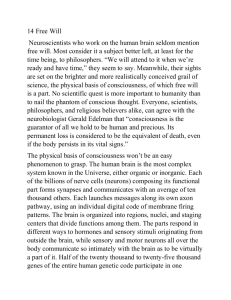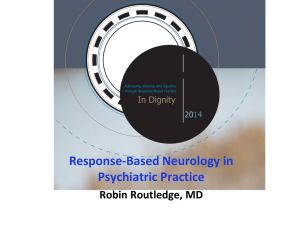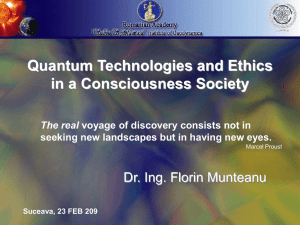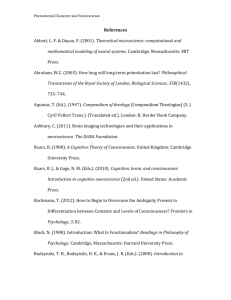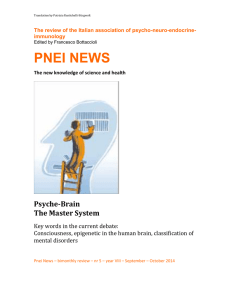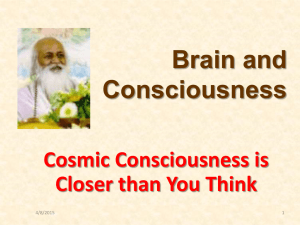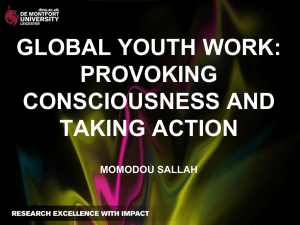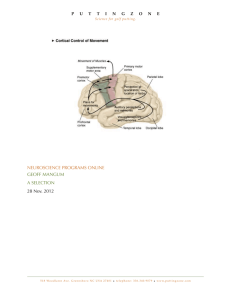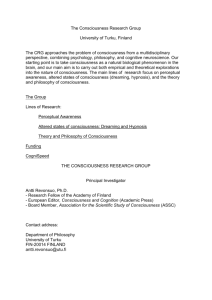No Consensus No consensus about “infrastructure” El Makhloufi 11
advertisement
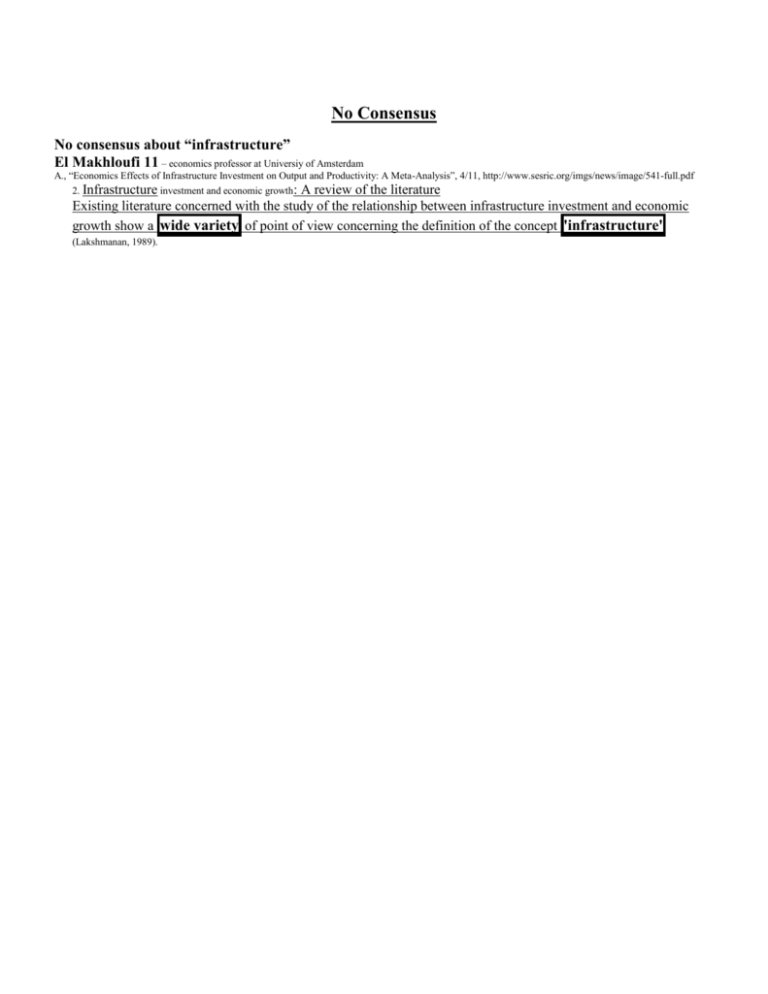
No Consensus No consensus about “infrastructure” El Makhloufi 11 – economics professor at Universiy of Amsterdam A., “Economics Effects of Infrastructure Investment on Output and Productivity: A Meta-Analysis”, 4/11, http://www.sesric.org/imgs/news/image/541-full.pdf 2. Infrastructure investment and economic growth: A review of the literature Existing literature concerned with the study of the relationship between infrastructure investment and economic growth show a wide variety of point of view concerning the definition of the concept 'infrastructure' (Lakshmanan, 1989). Limits Bad Limits are anti-educational – in-round breadth leads to out-of-round depth Hirsch 2 – PhD @ Yale, Professor of Education and Humanities @ UVA ED, Seeking Breadth and Depth in the Curriculum, http://www.csun.edu/~kdm78513/coursework/625/assignments/documents/hirsch.pdf Broad general knowledge is the best entree to deep knowledge, I draw this conclusion from the field of psychology called discourse analysis. The most effective way to introduce the meaning of a discount is to start with a summary such as an abstract found in learned journals. After students gain a broad context by developing a sense of the whole domain they can mentally fit the various parts that follow into that whole, and make sense of them, for example, teachers could show 1st graders a globe that shows oceans and continents before teaching them about specific places What do these four principles imply for the question of what we should teach? They force us to abandon the sloganized polarity between deep understanding and the rote learning of mere facts. We cannot gain deep understanding without having broad factual knowledge . On the other hand, piling up more and more facts that don’t really add much to our understanding or ability to learn wastes our time. If we wish to educate students to become well-rounded citizens and lifelong leaners, these four principles give us a preliminary handle on an answer to the question of what we should teach. We should teach a diversity of subjects that will lead to a broad general knowledge, and we should also teach in some depth a moderate number of specific examples. Neither the deep understanding pole nor the lots of facts pole is an optional approach to teaching and learning. Because competence and ability to learn are correlated with broad knowledge, we can infer that we should teach a broad range of subjects – not just the formal skills of reading, writing, and arithmetic, but also science, history, ethics, literature and the arts. AT: “Neuroscience Proves Limits Good” MRIs are guesswork, results are cherry-picked and reflect confirmation bias Noe 11 – Professor of Philosophy @ CUNY Alva, “Art and the Limits of Neuroscience,” http://opinionator.blogs.nytimes.com/2011/12/04/art-and-the-limits-of-neuroscience/ What is art? What does art reveal about human nature? The trend these days is to approach such questions in the key of neuroscience. “Neuroaesthetics” is a term that has been coined to refer to the project of studying art using the methods of neuroscience. It would be fair to say that neuroaesthetics has become a hot field. It is not unusual for leading scientists and distinguished theorists of art to collaborate on papers that find their way into top scientific journals. Semir Zeki, a neuroscientist at University College London, likes to say that art is governed by the laws of the brain. It is brains, he says, that see art and it is brains that make art. Champions of the new brain-based approach to art sometimes think of themselves as fighting a battle with scholars in the humanities who may lack the courage (in the words of the art historian John Onians) to acknowledge the ways in which biology constrains cultural activity. Strikingly, it hasn’t been much of a battle. Students of culture, like so many of us, seem all too glad to join in the general enthusiasm for neural approaches to just about everything. Leif Parsons What is striking about neuroaesthetics is not so much the fact that it has failed to produce interesting or surprising results about art, but rather the fact that no one — not the scientists, and not the artists and art historians — seem to have minded, or even noticed. What stands in the way of success in this new field is, first, the fact that neuroscience has yet to frame anything like an adequate biological or “naturalistic” account of human experience — of thought, perception, or consciousness. The idea that a person is a functioning assembly of brain cells and associated molecules is not something neuroscience has discovered. It is, rather, something it takes for granted. You are your brain. Francis Crick once called this “the astonishing hypothesis,” because, as he claimed, it is so remote from the way most people alive today think about themselves. But what is really astonishing about this supposedly astonishing hypothesis is how astonishing it is not! The idea that there is a thing inside us that thinks and feels — and that we are that thing — is an old one. Descartes thought that the thinking thing inside had to be immaterial; he couldn’t conceive how flesh could perform the job. Scientists today suppose that it is the brain that is the thing inside us that thinks and feels. But the basic idea is the same. And this is not an idle point. However surprising it may seem, the fact is we don’t actually have a better understanding how the brain might produce consciousness than Descartes did of how the immaterial soul would accomplish this feat; after all, at the present time we lack even the rudimentary outlines of a neural theory of consciousness. Leif Parsons What we do know is that a healthy brain is necessary for normal mental life, and indeed, for any life at all. But of course much else is necessary for mental life. We need roughly normal bodies and a roughly normal environment. We also need the presence and availability of other people if we are to have anything like the sorts of lives that we know and value. So we really ought to say that it is the normally embodied, environmentally- and socially-situated human animal that thinks, feels, decides and is conscious. But once we say this, it would be simpler, and more accurate, to allow that it is people, not their brains, who think and feel and decide. It is people, not their brains, that make and enjoy art. You are not your brain, you are a living human being. We need finally to break with the dogma that you are something inside of you — whether we think of this as the brain or an immaterial soul — and we need finally take seriously the possibility that the conscious mind is achieved by persons and other animals thanks to their dynamic exchange with the world around them (a dynamic exchange that no doubt depends on the brain, among other things). Importantly, to break with the Cartesian dogmas of contemporary neuroscience would not be to cave in and give up on a commitment to understanding ourselves as natural. It would be rather to rethink what a biologically adequate conception of our nature would be. But there is a second obstacle to progress in neuroaesthetics. Neural approaches to art have not yet been able to find a way to bring art into focus in the laboratory. As mentioned, theorists in this field like to say that art is constrained by the laws of the brain. But in practice what this is usually taken to come down to is the humble fact that the brain constrains the experience of art because it constrains all experience. Visual artists, for example, don’t work with ultraviolet light, as Zeki reminds us, because we can’t see ultraviolet light. They do work with shape and form and color because we can see them. Leif Parsons Now it is doubtless correct that visual artists confine themselves to materials and effects that are, well, visible. And likewise, it seems right that our perception of works of art, like our perception of anything, depends on the nature of our perceptual capacities, capacities which, in their turn, are constrained by the brain. But there is a problem with this: An account of how the brain constrains our ability to perceive has no greater claim to being an account of our ability to perceive art than it has to being an account of how we perceive sports, or how we perceive the man across from us on the subway. In works about neuroaesthetics, art is discussed in the prefaces and touted on the book jackets, but never really manages to show up in the body of the works themselves! Some of us might wonder whether the relevant question is how we perceive works of art, anyway. What we ought to be asking is: Why do we value some works as art? Why do they move us? Why does art matter? And here again, the closest neural scientists or psychologists come to saying anything about this kind of aesthetic evaluation is to say something about preference. But the class of things we like, or that we prefer as compared to other things, is much wider than the class of things we value as art. And the sorts of reasons we have for valuing one art work over another are not the same kind of reasons we would give for liking one person more than another, or one flavor more than another. And it is no help to appeal to beauty here. Beauty is both too wide and too narrow. Not all art works are beautiful (or pleasing for that matter, even if many are), and not everything we find beautiful (a person, say, or a sunset) is a work of art. Again we find not that neuroaesthetics takes aim at our target and misses, but that it fails even to bring the target into focus. Yet it’s early. Neuroaesthetics, like the neuroscience of consciousness itself, is still in its infancy . Is there any reason to doubt that progress will be made? Is there any principled reason to be skeptical that there can be a valuable study of art making use of the methods and tools of neuroscience? I think the answer to these questions must be yes, but not because there is no value in bringing art and empirical science into contact, and not because art does not reflect our human biology. To begin to see this, consider: engagement with a work of art is a bit like engagement with another person in conversation; and a work of art itself can be usefully compared with a humorous gesture or a joke. Just as getting a joke requires sensitivity to a whole background context, to presuppositions and intended as well as unintended meanings, so “getting” a work of art requires an attunement to problems, questions, attitudes and expectations; it requires an engagement with the context in which the work of art has work to do. We might say that works of art pose questions and encountering a work of art meaningfully requires understanding the relevant questions and getting why they matter, or maybe even, why they don’t matter, or don’t matter any more, or why they would matter in one context but not another. In short, the work of art, whatever its local subject matter or specific concerns ― God, life, death, politics, the beautiful, art itself, perceptual consciousness ― and whatever its medium, is doing something like philosophical work. One consequence of this is that it may belong to the very nature of art, as it belongs to the nature of philosophy, that there can be nothing like a settled, once-and-for-all account of what art is, just as there can be no all-purpose account of what happens when people communicate or when they laugh together. Art, even for those who make it and love it, is always a question, a problem for itself. What is art? The question must arise, but it allows no definitive answer. For these reasons, neuroscience, which looks at events in the brains of individual people and can do no more than describe and analyze them, may just be the wrong kind of empirical science for understanding art. Consciousness is not in the brain Guyer 9 Ruth, Washington Post, http://books.google.com/books/about/Out_of_Our_Heads.html?id=aFYCRPrrMEMC Alva Noë is one of a new breed—part philosopher, part cognitive scientist, part neuroscientist—who are radically altering the study of consciousness by asking difficult questions and pointing out obvious flaws in the current science. In Out of Our Heads, he restates and reexamines the problem of consciousness, and then proposes a startling solution: Do away with the two hundred-year-old paradigm that places consciousness within the confines of the brain. Our culture is obsessed with the brain—how it perceives; how it remembers; how it determines our intelligence, our morality, our likes and our dislikes. It’s widely believed that consciousness itself, that Holy Grail of science and philosophy, will soon be given a neural explanation. And yet, after decades of research, only one proposition about how the brain makes us conscious—how it gives rise to sensation, feeling, and subjectivity—has emerged unchallenged: We don’t have a clue . In this inventive work, Noë suggests that rather than being something that happens inside us, consciousness is something we do. Debunking an outmoded philosophy that holds the scientific study of consciousness captive, Out of Our Heads is a fresh attempt at understanding our minds and how we interact with the world around us. Alva Noë is a professor of philosophy at the University of California, Berkeley, where he is also a member of the Institute of Cognitive and Brain Sciences. His previous book, Action in Perception, was published in 2004. Alva Noë is one of a new breed—part philosopher, part cognitive scientist, part neuroscientist—who are radically altering the study of consciousness by asking difficult questions and pointing out obvious flaws in the current science. In Out of Our Heads, he restates and reexamines the problem of consciousness, and then proposes a startling solution: Do away with the two hundred-year-old paradigm that places consciousness within the confines of the brain.
